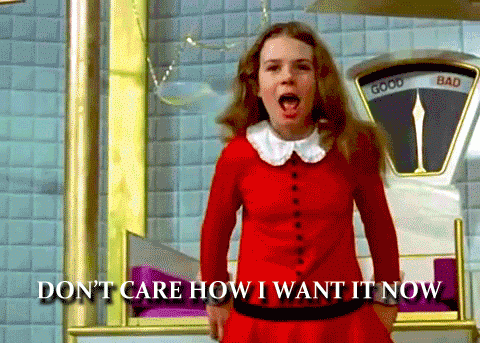 I’ve said many times that the seeds of churn are planted early. Whether it’s in your marketing – both the things you say but also the types of customers you target with your messaging and outreach – to the things you say and do during the sales process, you could be acquiring customers that already have one foot out the door.
I’ve said many times that the seeds of churn are planted early. Whether it’s in your marketing – both the things you say but also the types of customers you target with your messaging and outreach – to the things you say and do during the sales process, you could be acquiring customers that already have one foot out the door.
Because this issue is so important and really can’t be talked about enough, when my friend Steli Efti – CEO of Close.io – reached out and offered to share these four sales mistakes that lead to high churn, I was thrilled.
Be sure to check out the Afterword below Steli’s article where I share some articles and resources that will help you further refine your Ideal Customer and reduce churn.
Okay, without any further ado… here’s Steli…
Four Sales Mistakes That Lead To High Churn for SaaS Companies
Churn is the biggest threat to sustainable SaaS growth. Sales teams often aggressively close deals because of myopic focus on immediate growth. What they fail to recognize are the long-term implications of short term focused selling to the business.
Here’s how to avoid the 4 most common sales mistakes that lead to high churn in SaaS.
#1: Selling To Customers That Shouldn’t Buy Your Product
Everybody is eager to close as many deals as possible. At the same time you need to be disciplined to close only truly qualified prospects. There will be many times when you can sell to someone who isn’t really a great fit. In SaaS, selling to the wrong customers will actually kill your business.
The Consequences
- You’ll get feedback from the wrong people, which can result in bad choices to your future product roadmap and development.
- You’ll have to deal with a lot of bad customer support issues.
- Poor team morale – dealing with customers who don’t appreciate what you do is just discouraging and can take the wind out of your teams’ sails.
- Wrong customers won’t get value from your app and not only churn, but tell everyone about their bad experience.
How to fix it?
Don’t just focus on closing more deals – focus on closing better deals.
- Who are your ideal customers?
- What are their wants and needs?
- What industry are they in?
- What size of business are they?
- Are they switching from another solution or first time buyers?
- What’s their budget for this kind of application?
- Who is the decision maker?
- Who are the users?
Clearly define criteria that are required to qualify as a good customer, to make sure that everyone who buys your product will get value out of it and succeed with it.
#2: Overpromising
Startups are never where they want to be – you’re constantly improving your product. It’s tempting to sell an improved future-version of your product today, and hope that the customer will stick around long enough to actually experience it.
The Consequences
It’ll hurt your credibility and damage your relationship if you announce feature X will be released in 3 weeks, and 3 months later you’re still telling them:
“We’re working hard on it, but there are some unforeseen issues.”
Many potentially good customers will cancel, and they’ll never trust you again. Even if your product is the perfect fit for them three months later, they won’t believe you anymore.
How To Fix It
Let your prospect know the timeline of future improvements – and err on the side of caution. You expect a feature to be released in two weeks? Tell your prospect it’ll be ready in four weeks.
If a feature release is too far in the future, don’t let them buy yet. Tell them:
“Look, I want you to be our customer, but at this point our product is just not the right fit for you. We have the features you need in our development pipeline, but it’ll probably take us three to four months to get there. So what I’d like to do is to follow up with you once we’re there.”
#3: Selling on low price, not value
A prospect tells you that your price is too high, often early on in the sales process, before you’ve really had a chance to demonstrate how the product will benefit them. They’ll focus the sales conversation on pricing and request a discount. Eager to close the deal, you let them have their discount.
The Consequences
Customers who buy only because of low prices are usually trouble. Oftentimes the people who request the biggest discounts will also request the most support later on, and constantly complain when your product isn’t doing what they want it to do the way they want it to do it.

What’s more – after they signed up for a discount and created a ton of support requests, and made you deal with their bad attitude, they often cancel.
How To Fix It
Direct the focus on what matters: your product, and the value it provides. Not how much it costs. Did you find out what really matters to your prospect? Did you gain a true understanding of their objectives, and the problems they want your product to solve? Demonstrate the value your product will create for their business specifically before talking pricing and offering any discounts to win deals.
#4: Letting customers cancel without selling them to stay
A customer cancels, or metrics show that he’s disengaging with your app (an indicator that they’ll cancel in a coming billing cycle). Since you already had a sales conversation with them before they signed up, and they already used your product and got to know it, you just let them go, without garnering any information.
You assume they cancelled because your product isn’t a good fit for them. In that case, cancelling is the right thing to do. But oftentimes there are other reasons:
- The product is actually a good fit, but they cancel because they aren’t using your app optimally.
- They’ll cancel because they need a feature that your product doesn’t have – but maybe you’re already working on that feature and they are unaware of it.
- Or they cancel because your internal champion left and their new VP sales wants to use another software, because that’s what he has always used.
The consequences
You don’t know why your customers churn. And you’re losing many customers that you could have easily kept just by investing a little bit of effort. This is a scalable problem – the more you grow, the bigger this issue will become.
How To Fix It
Talk with your lost customers. Find out why they cancelled. If it’s an issue you can solve, do so.
- Maybe you just need to help them find a way of utilizing your app better, and provide better training & support.
- Or you need to let them know that you’re soon going to release that feature, and offer them a deal to stick with you for the time being.
- Or sell your product to the new VP sales, and make him understand why your product is indeed the right choice.
Reduce Churn From The Get Go
There are many ways to reduce churn, and it’s important to recognize where you’ll get the biggest leverage. Sales is generally a good place to start because it’s early in the process and filters out prospects that would be painful to retain later on.
About Steli
Steli Efti is the CEO of Close.io, sales software that helps SaaS companies close more deals and make more sales. He has worked with over 150 venture backed startups helping them scale their sales models. You can follow him on twitter here.
Afterword
Lincoln here again… if you want to use Steli’s article as a jumping-off point, here are some resources on identifying your Ideal Customer and Reducing Churn that I’ve put together for you:
- Who’s your ideal customer?
- How to Get In Front of Your Ideal Customers
- Stop Optimizing Your Sales Funnel for the Wrong Customers
- Churn Rate Reduction Starts with Attracting the Right Customers
- 22 Ways to Reduce Churn with Growth Hacking
I hope all of this helps you get – and keep – more customers. Good luck!



